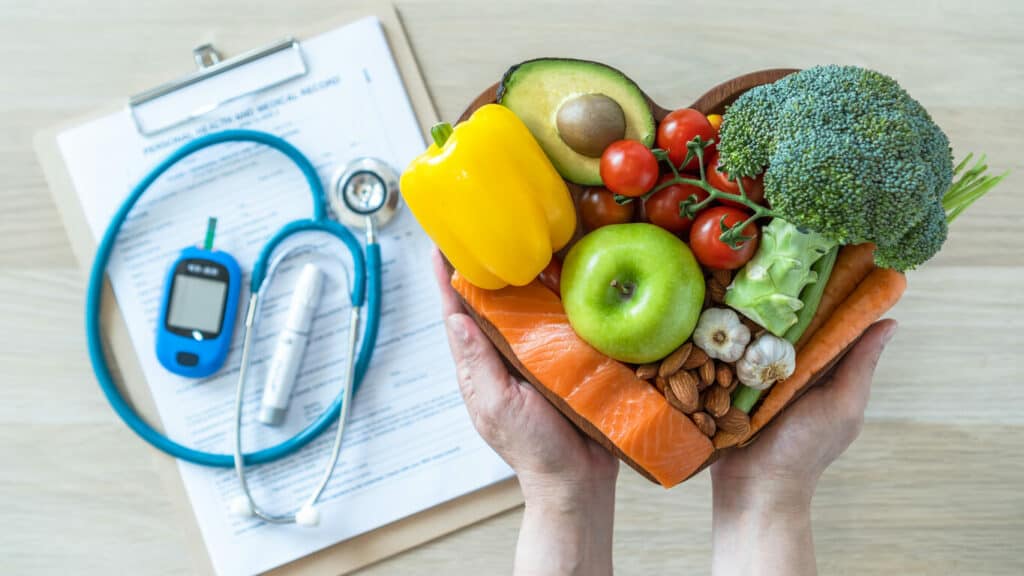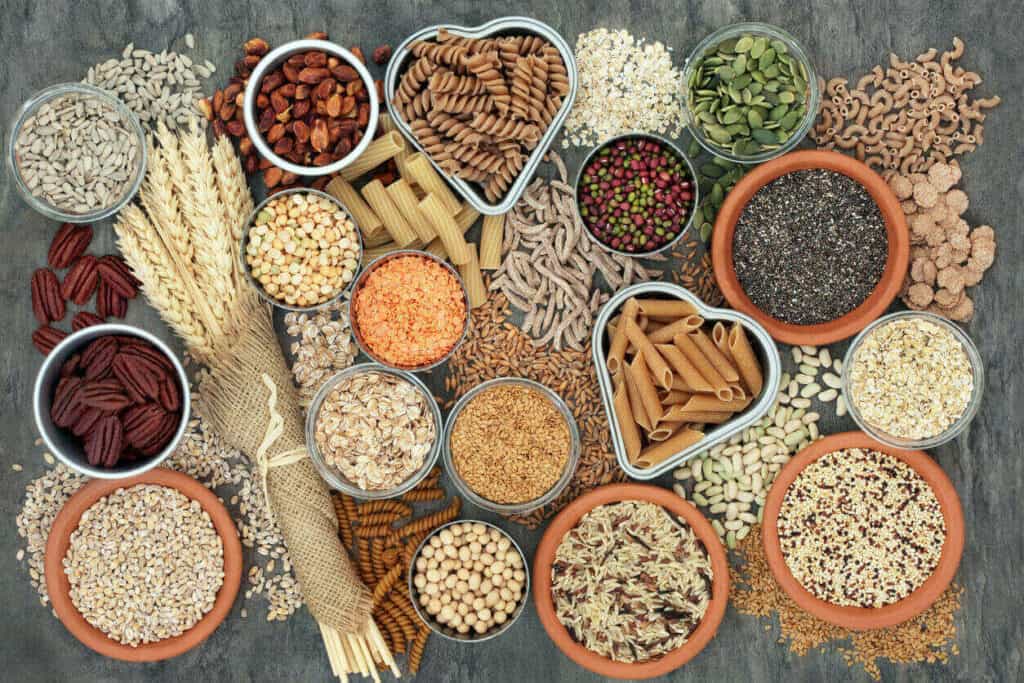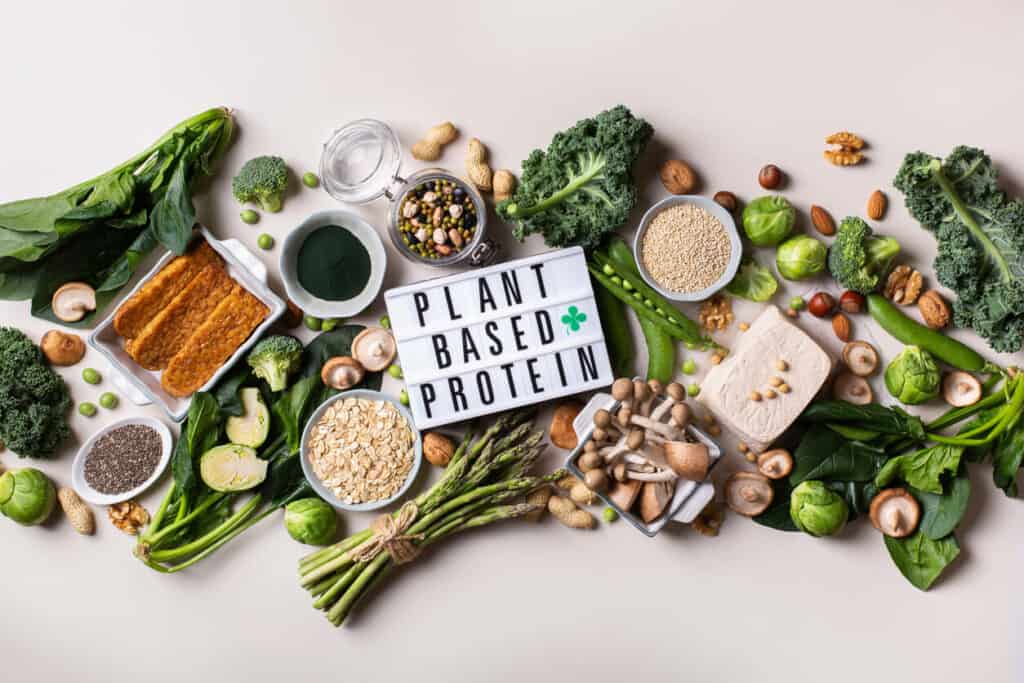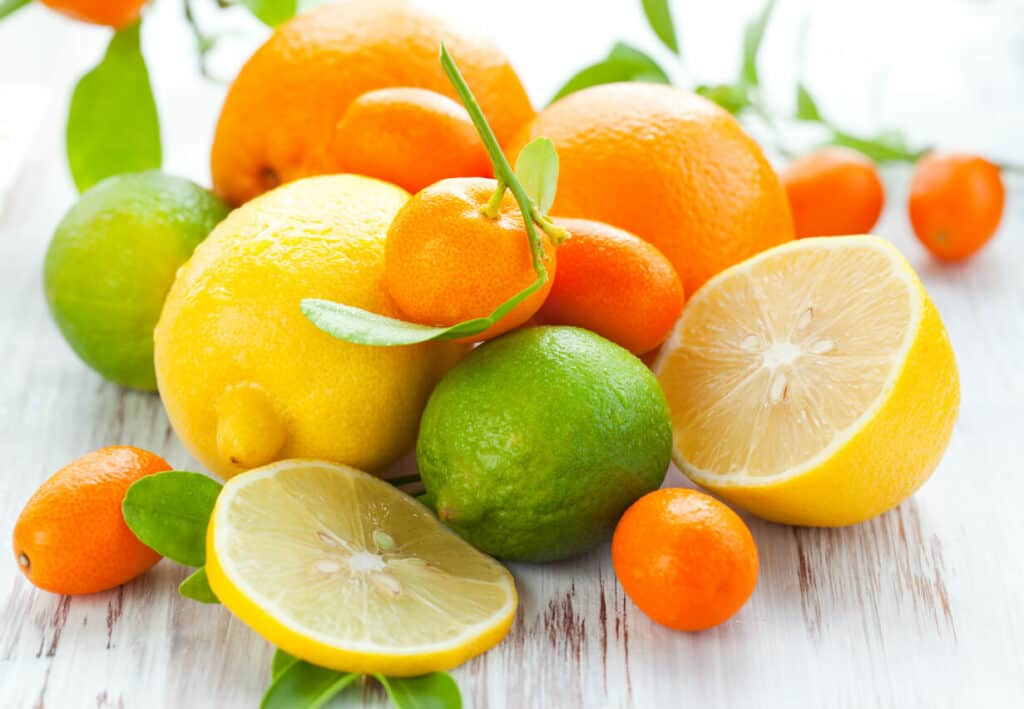
What is diabetes and why should we try to manage it?
Diabetes is a condition of constantly elevated blood glucose levels, also called blood sugar levels. This is because either the body doesn’t produce enough insulin, the hormone responsible for turning sugar into energy, or it can not use the insulin well enough.
Over time, high sugar levels can cause damage to the organs and their functions. According to the National Institute of Diabetes and Digestive and Kidney Diseases (NIDDK), the bodily systems and parts that can be affected by neglecting elevated blood sugar levels for a long time are:
- The cardiovascular system
- The kidneys
- The eyes
- The teeth
- The nervous system
- The lower extremities, i.e., legs and feet
Unfortunately, there is no known cure for diabetes. Once it has been diagnosed, we must learn to live with it. We can, however, educate ourselves on how to manage and prevent the condition from worsening.
The two complementary methods recommended by NIDDK for keeping diabetes under control are following a healthy diet and having an active lifestyle.
Amy’s Eden has put up this short guide on what food and drinks diabetics should consume and what to avoid to help you make the right dietary choices and manage the condition with ease.
Most Common Types of Diabetes
First, let’s look at the different types of diabetes diseases. The most common ones are type 1, type 2, and gestational diabetes.
The bodies of people with Type 1 diabetes do not produce any insulin. For this reason, they need to take a dose of the hormone daily. This type is usually common in children, but it may appear at any age.
Type 2 diabetes is the most common one and typically occurs in middle-aged and older people, although nowadays, it has become more frequent in young adults too.
People with type 2 diabetes usually have insufficient quantities of insulin, or their bodies can’t use the hormone well enough. Depending on the stage of the condition, patients with type 2 diabetes may have to take insulin-regulating drugs or the hormone itself.
Gestational diabetes develops only in pregnant women and disappears after they give birth. Sometimes it may be a warning sign for type 2 diabetes later in life. Women with gestational diabetes have to follow a strict diet during their pregnancy in order to carry a healthy baby to term.
Why Are Dietary Habits Important For People With Diabetes?
The glucose, or sugar in our bodies, is very closely related to what we consume – food and beverages included. Learning how to feed our bodies to help keep the blood sugar levels from spiking is the first and most crucial way to manage our diabetes.

This involves losing weight if we are overweight or obese and making healthy choices about what and when we eat and drink, together with strictly following the medication treatment plan prescribed by our doctor.
Which Food Groups Are Essential For People With Diabetes?
If you have been newly diagnosed with diabetes, your healthcare provider has probably informed you that you must be careful of what you consume. However, do not despair; there is no need to give up your favorite foods completely. You may have to shrink the portions or simply eat them less often.
Experts at the National Institute of Diabetes and Digestive and Kidney Diseases (NIDDK) agree that the diabetes eating plan should consist of a wide variety of healthy foods.
The food groups that must be present on the menu of a person with diabetes are:
- Vegetables
- Fruit
- Grains
- Protein
- Dairy and
- Healthy fats.
When selecting what to include in your diet, always prefer foods with a low glycemic index, rich in fiber, and poor in saturated fat, sugar, and salt.
Vegetables and Fruits
These are the two most important food groups and should be a central part of the diabetic diet. This means that they must constitute half of each portion of the day’s main meals. Non-starchy vegetables, such as cabbage, broccoli, peppers, leek, spinach, carrots, leafy greens, and tomatoes, should be preferred to starchy ones.
Fruits containing less natural sugar (fructose) such as grapefruit, oranges, all kinds of berries, melons, and green apples, must be the first choice.

Grains
Grains are suitable for people with diabetes as long as they are whole grains. Foods like whole wheat bread, brown rice, oatmeal, barley, and quinoa have a lower glycemic index, meaning it takes longer for the body to digest them. Therefore, their consumption would not cause a sudden rise in diabetic blood glucose levels.
Protein
Protein is a vital part of the human diet as it supplies us with some key amino acids our bodies can not create otherwise. When selecting protein foods, people with diabetes should choose legumes first, nuts second, and then fatty fish, according to dietitians. People with diabetes need to eat fiber-rich protein that contains a low amount of saturated fats.

Dairy
Dairy foods on the diabetic menu should be low-fat or non-fat products. This is due to the fact that many diabetics also suffer from high blood pressure. Eating low-fat dairy products can prevent the accumulation of high cholesterol in the blood and combat elevated blood pressure. Low-fat dairy can lower the risk of diabetes in some cases as well.
Fats
Fats considered healthy for diabetics, according to the American Diabetes Association (ADA), are monosaturated fats. These come from avocados, canola, nuts, olives, peanuts, and safflower. They are recommended because studies have shown that their daily use lowers the levels of ‘bad’ cholesterol in the blood.
Another essential type is polyunsaturated fats which are also thought to affect cholesterol levels positively. These are more well-known with the names Omega-3 and Omega-6 fats and can be found in fatty fish, flax seeds, walnuts, tofu, sunflower seeds, and eggs.
Foods And Beverages To Avoid
Since diabetes mean that your body can not produce insulin and therefore can not deal with glucose, it is best to avoid foods and drinks with high sugar content.
Unfortunately, this does not mean only sweets but also foods high in carbohydrates, as they cause high blood sugar levels to spike. This does not mean carbs should be eliminated completely from your diet, but you need to significantly limit and consume them in small portions.
Foods containing a lot of sugar are:
- Candy, cake and other baked goods, ice cream, canned fruit, sweetened cereals
- White rice, bread, pasta, and all products made with white flour
- Beverages with added sugar like sodas, juice, sports drinks, energy drinks, etc.
Other foods that need to be avoided are:
- Fried or food rich in saturated and/or trans fats – this means most packaged and processed foods
- Salty foods, or foods with lots of sodium, which is the other name for salt
- Starchy vegetables – potatoes, corn, sweet peas
Diabetics should also limit their alcohol intake as alcoholic beverages have a high amount of sugar. Additionally, there is a danger of alcohol lowering your blood sugar level too much if you are on any insulin drugs.
Top 9 Superfoods For Diabetics
Superfoods are called ‘super’ because they are rich in vitamins and minerals and are generally paramount for people with diabetes. It is worth mentioning that this is not a term officially adopted by the Food and Drug Administration (FDA), but many food and drink producers use it for advertising their products.
Another important thing to remember is that the best food for diabetics is food that hasn’t been processed. Natural, bio, or organic produce without additives, coloring, and preservatives should always be preferred to processed food coming from a package, box, can, or bag.
Please note that the food choices suggested by Amy’s Eden below comply with the ADA and NIDDK. They are vitamins, minerals, antioxidants, and fiber-rich foods that, consumed regularly, will help you manage your diabetes condition. These foods are also effective in preventing diabetes occurrence.
- Dark green leafy vegetables such as kale, spinach, chard, and collard greens are great for diabetics as they have a very low starch and fat content. At the same time, they are extremely rich in vitamins A, C, K, and E and minerals like iron, potassium, and calcium. By including leafy greens in your diet, you will add a ton of fiber too.

- Tomatoes and carrots, although considered to be sweet, do not have a high sugar content. They are both non-starchy, rich in vitamin C, and with a low glycemic index.
- Broccoli and broccoli sprouts are considered to be very effective vegetables that can lower blood sugar levels in people with diabetes. This is due to the compound called sulforaphane. It is produced when these vegetables are chopped or chewed, and it has been proven to reduce glucose production and improve glucose control in people with type 2 diabetes.

- Beans in all their varieties – kidney, pinto, black, and mung, are all a great source of protein, magnesium, and potassium. They indeed contain carbohydrates, but at the same time, are rich in fiber and have a low glycemic index. The combination of these features earns them a place in the list of diabetes superfoods. The ADA suggests diabetics include meals with dry beans or no-sodium canned beans at least three times per week.
- Citrus fruit – grapefruits, oranges, lemons, tangerines, limes – are rich in antioxidants, vitamin C, folate, and fiber while low in sugar. This makes them another superfood that should be included in the diabetic’s diet. The consumption of all fruit should be in moderation, and diabetics can have an orange a day. It is a good idea to avoid fruit juices as they are high in sugar and poor in fiber compared to the actual fruit.

- Berries are a superfood because they contain a small amount of sugar but are immensely rich in antioxidants, vitamins C and K, manganese, potassium, and fiber. Including a handful of strawberries, blueberries, raspberries, and blackberries in your daily menu will prevent blood sugar spikes while curbing your sweet tooth.
- Oily or Fatty fish, such as salmon, herring, sardines, tuna, mackerel, and trout, is rich in omega-3 fat, which is what puts this fish on the superfoods list. Additionally, fatty fish is rich in protein and vitamin D which is important, as often, people suffering from diabetes also suffer from low levels of vitamin D. Consume it broiled, grilled, or steamed and you will avoid the extra saturated fat or carbs that fried recipes can add to it.

- Nuts, especially walnuts, contain omega-3 and omega-6 fats, fiber, magnesium, and protein, making them great snacks for diabetics. They can help curb your hunger between meals without raising your blood sugar levels.
- Whole grains are called ‘whole’ because they contain all parts of the grain, unlike refined grains. Whole grains have kept their bran and germ, which means that they contain fiber, vitamins, phytonutrients, minerals, and fats, in addition to the protein and carbohydrates of the refined gains. Due to this, their glycemic index is much lower. Some of the best whole grains are quinoa, farro, whole-grain barley, and sprouted grains.
Five Other Diabetes-Friendly Foods
- Avocados are a fantastic source of over 20 vitamins, including C, K, and E. They are also high in fiber, minerals, and good fats. All this makes them great to include in the diabetic diet.
- Pumpkin seeds have a high content of magnesium which, similarly to vitamin D, is usually low in people with diabetes. At the same time, magnesium might be one of the factors that decrease the risk of developing type 2 diabetes.
- Chia seeds are very rich in fiber, as well as antioxidants, omega-3, and magnesium – all key elements that need to be present in the diabetic’s diet.

- Ginger is one of the foods called anti-inflammatory, a term used for plant-based antioxidant-rich sources. It is thought that anti-inflammatory foods can help decrease inflammatory processes in the body. This can alleviate the symptoms and reduce some of the health risks associated with diabetes.
- Cinnamon supplements have been investigated as a powerful tool for lowering blood glucose levels, especially in people with a body mass index (BMI) of 27 and above. It may also help overweight diabetics lose weight and regulate their lipid levels.
The takeaway

Living and thriving with a diabetic condition is not only possible but also a reality for a large portion of the population. The older our loved ones and we get, the higher the chances of developing type 2 diabetes.
In order to create the best possible conditions and support your beloved family members or yourself, based on advice from ADA and NiDDK, our specialists at Amy’s Eden recommend a healthy diet rich in vegetables, fruit, healthy protein, fats, vitamins, and minerals.
The key to this is to make wise choices and consume a large variety of non-processed, unrefined, low-in-sugar, carbs, salt, and saturated fat foods and beverages. Such a diet can prevent further complications of the condition and lower the chances of developing diabetes in people with high BMI or those with a genetic risk of the disease.
However, don’t forget to consult your nutritionist, as they can advise you better on diabetic superfoods ideal for you.
If you have a diabetic elderly loved one who would benefit from the assistance of a caregiver, Amy’s Eden caregivers can provide exceptional care to improve their quality of life. Contact us today to find the ideal caregiver for your loved one.
Sources:
https://www.niddk.nih.gov/health-information/diabetes/overview/diet-eating-physical-activity
https://diabetes.org/healthy-living/recipes-nutrition/eating-well/diabetes-superstar-foods




